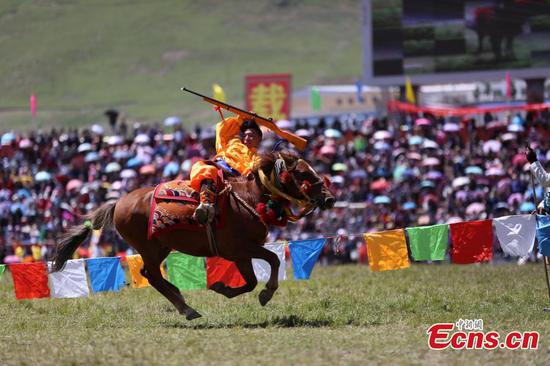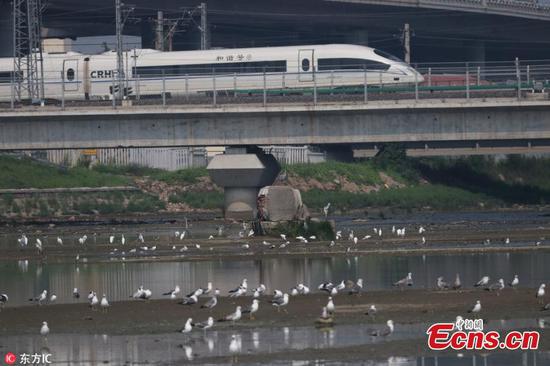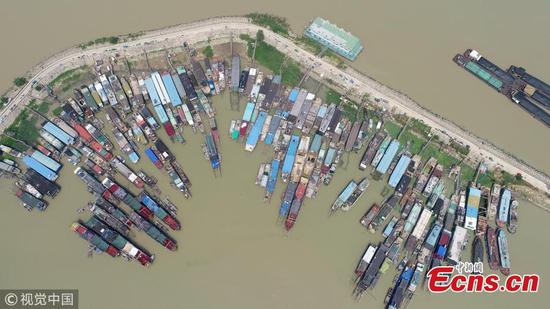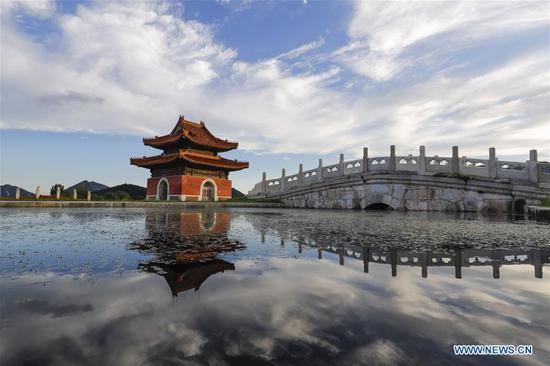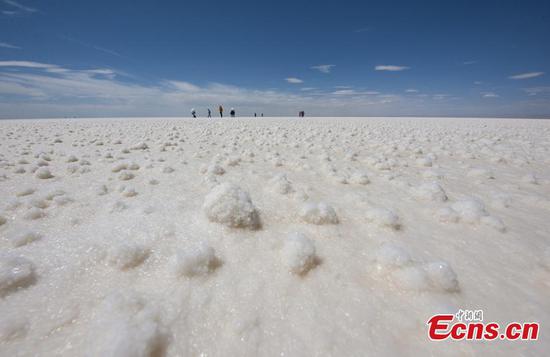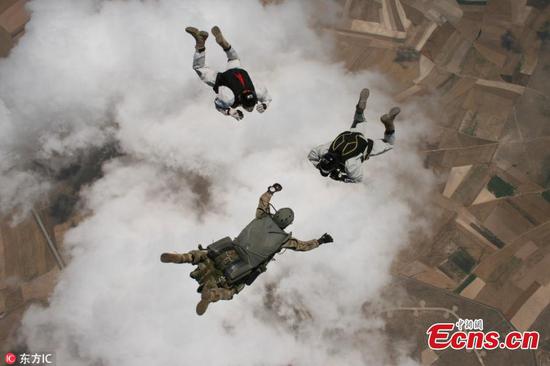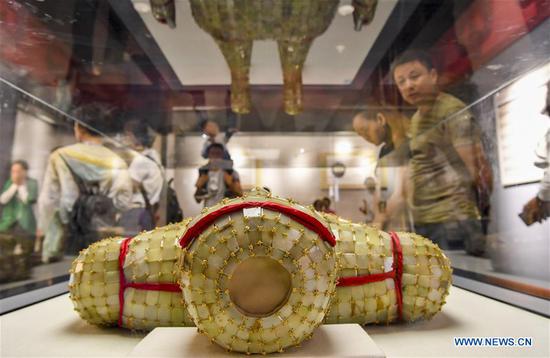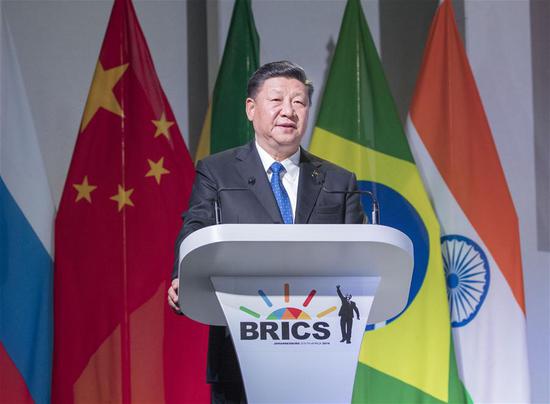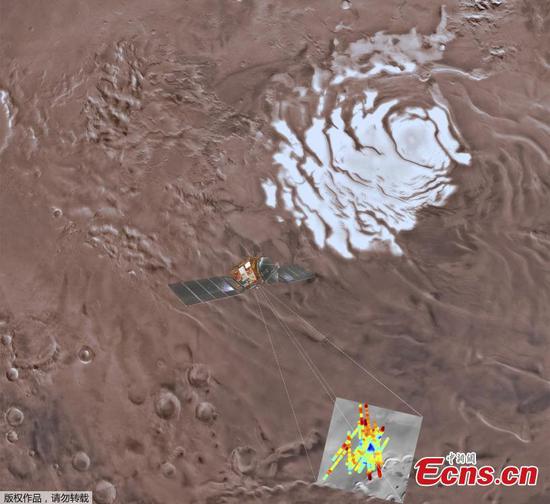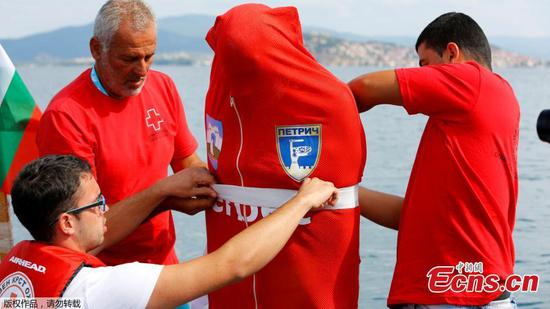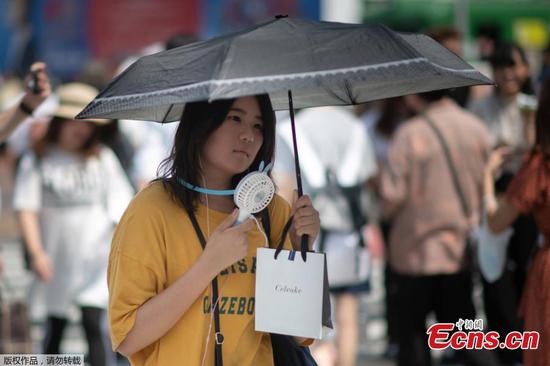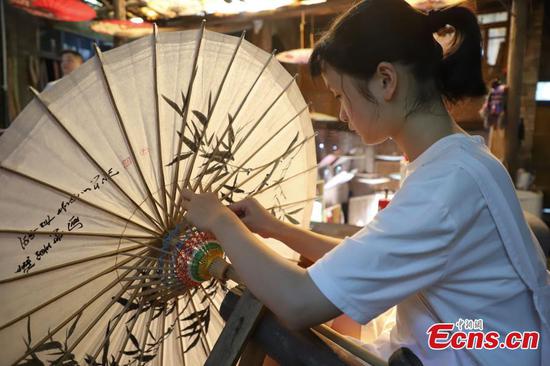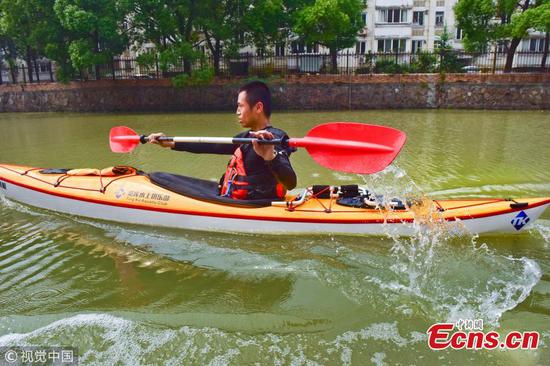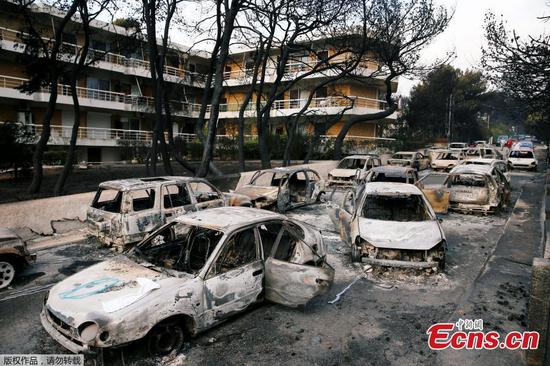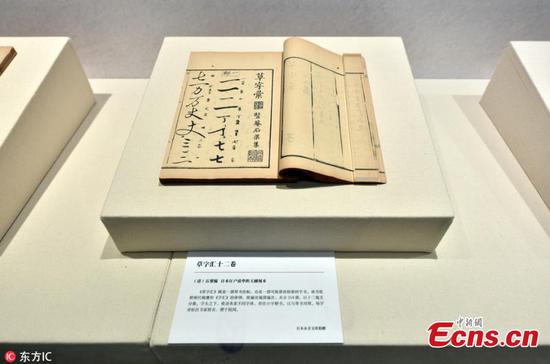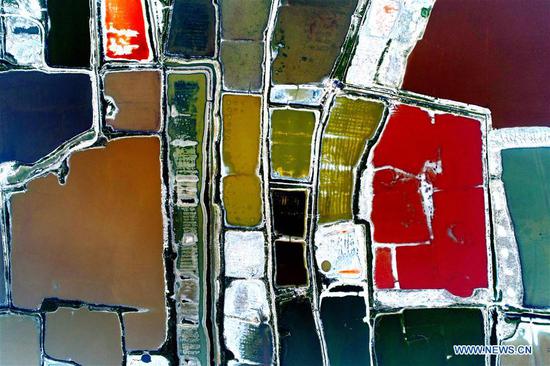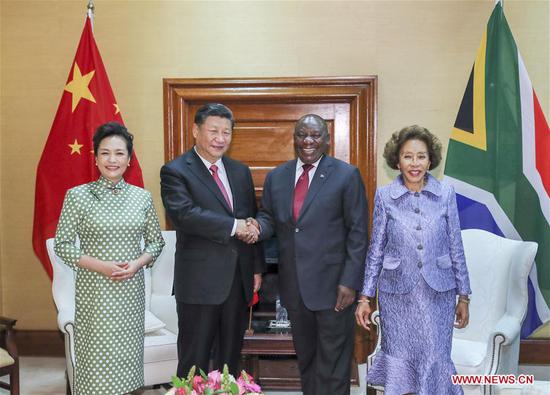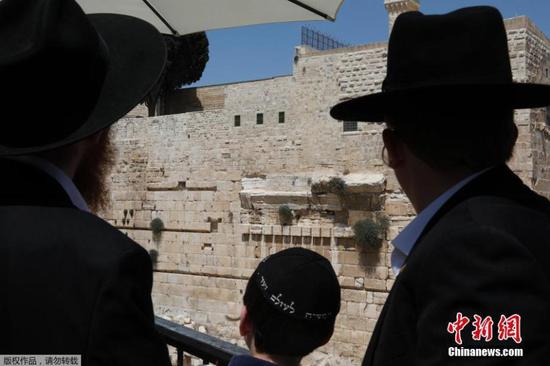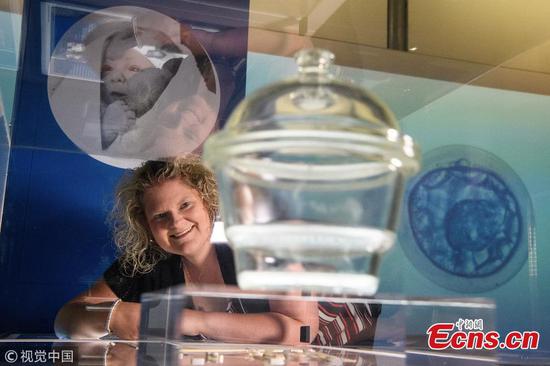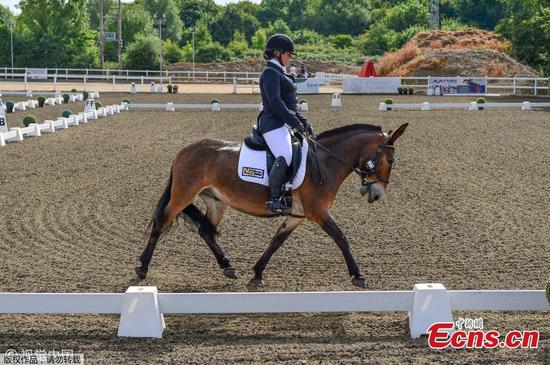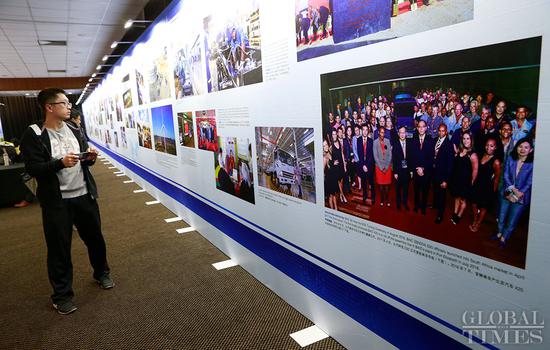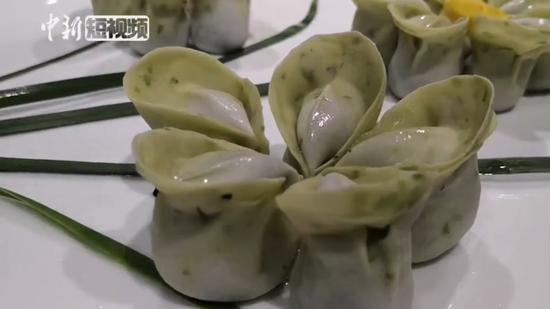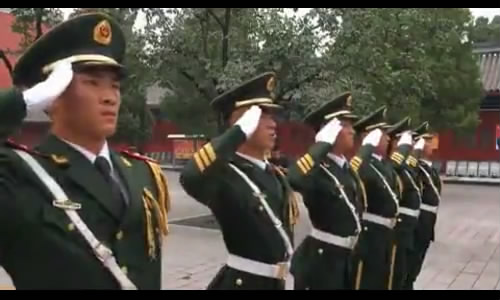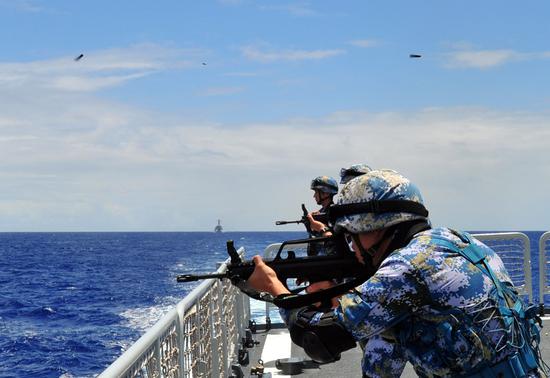
Soldiers open fire on board the guided-missile destroyer Haikou during an international maritime exercise. (Photo by SHAO LONGFEI/FOR CHINA DAILY)
The PLA Navy crew on board the guided-missile destroyer Haikou will continue to improve its combat capability and forge a strong naval force that is always ready and sure to win, according to the warship's commander, Captain Fan Jigong.
They have developed innovative tactics, imposed stricter requirements for combat training and will keep looking for ways to enhance their combat skills, Fan said.
"Our goal is that as long as our ship is sailing we are ready to fight. That is what we are always working on," he said.
The Type 052C guided-missile destroyer, domestically developed by China, was built in 2003 and entered service in the People's Liberation Army South Sea Fleet in 2006.
It has completed more than 30 major tasks, including three escort missions in the Gulf of Aden and Pacific Rim, and was honored title as an Escort Vanguard Warship by the Navy in 2015.
President Xi Jinping has inspected the destroyer and urged the Navy to further strengthen its combat training and boost its elite forces' capabilities.
According to Fan, training simulations have been designed to practice tactics in realistic battle conditions. For example, a gun that was once adjusted to its most favorable firing position is now tested at different angles, including ones that limit its range or have obstructed views.
Communications and other signaling devices are sometimes interfered with, and participants are not told of combat plans in advance of drills.
They also replay the exercises - from planning to carrying out each drill. All officers and sailors record every detail and go over them after the drill is completed to discuss and assess the performance together.
Big data is also used to help create different types of battle conditions - such as changing radar and other electronic signals - enabling analysis of different combat situations and research into new tactics.
The crew is divided into groups to study new tactics and target major problems including air defense and antisubmarine warfare.
"Our training now is becoming more like real combat," said Zhou Wenming, the ship's electronic intelligence technician. "We need to be prepared for anything that could happen."
Zhou said real damage control work was seldom conducted in the past, such as fixing leaks or putting out fires, and only a small team was in charge. But now every crew member needs to have basic damage control skills and get realistic practice.
He added that crew members now need to enter the middle of a fire to fight it, instead of putting it out from a short distance with an extinguisher.
"We are now always in a state of combat. We can set sail as soon as we have orders," Zhou said.
Fan added that the challenge now is how to incorporate into and coordinate well with other forces, especially the aircraft carrier fleet, given the rapid development of information technology.
"We now never fight alone. Whenever we are out on a mission we go in unison with monitoring and backups from the shore, satellites and aircraft, so we need to begin thinking more systematically and keep the big picture in mind."
In 2008, the Haikou undertook its first escort in the Gulf of Aden with the destroyer Wuhan and supply ship Weishanhu. The Chinese commercial ship Tianyu No 8 was rescued from pirates in February 2009.
So far the Haikou has sailed more than 70,000 nautical miles, making more than 120 tours, escorting about 600 national and foreign cargo ships and rescuing around a dozen commercial ships from pirates, according to the PLA Navy.
Over the past five years, the ship has sailed to the South China Sea "more than 10 times" to conduct patrols, and has confronted foreign warships hundreds of times, it said.











